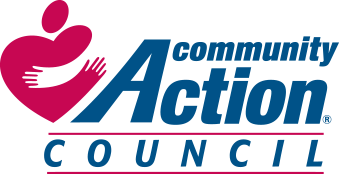On Saturday, May 12, at the Lexington Convention Center, the Council hosted its first-ever community-wide Community Action Poverty Simulation (CAPS)—an interactive activity developed by the Missouri Association for Community Action that is designed to help participants gain a better understanding of the daily challenges of living in poverty. The event, sponsored in part by the Junior League of Lexington and Kentucky Utilities, brought together over 50 individuals drawn from among civic leadership, business partners, local social service providers, and the local faith community. CAPS was so well-received that we immediately made plans to host a second, community-wide event in the fall, likely October.
During the CAPS learning experience, each participant was assigned the role of one member of a household with low income and directed to engage in live-action role play. The family scenarios and scripts used in CAPS depict common situations faced by many low-income families, such as losing a job unexpectedly or supporting children as a single parent. Various community resources and institutions—such as a bank, employer, utility company, school, police, and Community Action Agency—were represented by staffed tables set up at the perimeter of the simulation space for participants to interact with during the simulation. The challenge for each household was simply to meet its basic needs for the duration of during the four, 15-minute “weeks.” A debriefing session following the simulation enabled all participants to share reflections and carry forward conversations on how to address poverty.
We’d like to share with you some of the main takeaways from this experience—in the participants’ own words—and how they relate to the real-life circumstances of families that the Council works alongside every day.
Takeaway #1: Living in poverty requires a lot of work, time, and money
“This experience has opened my eyes as to how much work is involved in navigating the system and how much work is involved in being on the verge of poverty.”
“This experience has demonstrated its actually more expensive to live in poverty. Time, energy, and money requires more energy, NON-STOP.”
“I felt bad about working in the Pawn Shop. People were coming in to sell their personal objects for almost nothing.”
Participants in the poverty simulation quickly became overwhelmed keeping track of their simulated households and figuring out how to keep financially afloat. In real life, people with low income—even as they often must work longer hours for lower wages—have a harder time navigating essential functions of daily living like securing transportation and arranging child care. This difficulty in turn leaves limited time for shopping, preparing food, or sleeping. Even more work, time and energy is needed to take steps to improve their position: to apply and interview for a better job, pursue higher education, or seek assistance in the form of benefits.
What’s more, in various ways, having low income makes life more expensive. Poverty means not having ready money available for important transactions—especially big-ticket items such as furniture, a car, a tuition bill, or a surgery. Ultimately this means people with low income often end up paying more, in the form of interest and/or late payment fees, and are vulnerable to exploitation and even fraud. Such factors result in what is sometimes known as a “poverty trap,” meaning that people who are already in poverty have an even harder time earning enough money to escape.
Takeaway #2: Poverty means insecurity and stress
“It was an eye opener and a reminder of how quick things can turn for the worst.”
“This experience has showed me how quickly circumstances can change. Not everything is in our control.”
“I think we became vulnerable when we live in poverty. It is just like a nightmare.”
The experience of poverty means being vulnerable to sudden setbacks from which it is hard to recover. Unexpected misfortunes, from an accident or injury to the breakdown of a car or appliance, are a part of life that can happen to anyone. But for people with low income, who have less money to throw at these problems when they arise—less margin for error—the effects can be devastating and quickly lead to other setbacks, in a financial domino effect. As a result, one of the biggest impacts of living in poverty is not just the result of being deprived of resources, but the anxiety of knowing that at any time you may lose what you have due to circumstances well beyond your control. The anxiety itself can affect how people with low income make decisions: they are always aware that they have less room to make even one mistake. Recognizing this was another big takeaway for many participants.
Takeaway #3: Poverty is a part of our life story
“This experience has opened memories from the experience I had as a youth.”
“This experience has reminded me of how far I have come since childhood.”
“This experience has touched on some of my own experiences.”
One might think the main value of a poverty simulation would be to expose people who have limited personal experience with poverty to the realities of living with low income. But often, in the Council’s experience of hosting poverty simulations, the biggest emotional response from participants comes when they reflect on past times in their own lives when they lived in poverty. Many participants spent all or part of their childhoods in low-income households. The poverty simulation experience helped them understand what their parents had gone through in raising them—the challenges they faced, the practical sacrifices they had to make, their emotional dilemmas—and reminded them how helpless they may have felt at the time. In other cases, participants had gone through a spell of poverty in their adult lives, such as when raising young children, being a student, going through divorce, or suffering serious illness. For these people, the poverty simulation brought up painful memories of how they had lived during those days—as well as a new, thought-provoking perspective on the various turns their lives have taken.
This goes to show that poverty is a fluid state, representing a phase in many of our lives. Those who live in poverty today are not some closed, separate group of people; they are always ourselves, in the actual past or in the possible future. Even if we now find ourselves in a more stable financial position, it’s rare that the struggles of those living in poverty are truly unfamiliar. When approaching the issue of poverty, whether as professionals, leaders or concerned community members, many of us can bring empathy and understanding that is informed by our own personal experience.
Takeaway #4: Poverty has many different faces
“This experience has crystalized the need for groups who combat poverty to be able to meet people where they are and have room for making the best decisions to help the family. Flexibility is key.”
“It brings a deeper awareness of how important it is not to treat each case the same.”
“Always stop and look at the whole picture.”
Participants in the poverty simulation were assigned to households, each of which had a unique composition of family members, assets to work with, obligations to meet, and barriers to overcome. Each household’s unique circumstances shaped its options and interactions during the simulation, and as a result, each participant came away with a unique overall experience. This reflects the reality that, while people with low income may face a similar set of issues that may be addressed collectively, each individual person in poverty (even within the same household) has a unique combination of needs. On the larger scale, this means that the needs of low-income households can be best addressed through a network of interconnected resources, services and providers, all working toward the same goal—family self-sufficiency—through different, specialized means.
For those participants who in real life are current social services providers, the poverty simulation experience brought home to them that each person they face in the course of their work is an individual from a unique background, and that it is unhelpful to make generalizations or assumptions before hearing their full story. In order to provide the most effective assistance, providers must understand the complexities of each situation and realize that families have multiple needs best met by different providers. Working together, they can create an extensive set of resources for the community.

